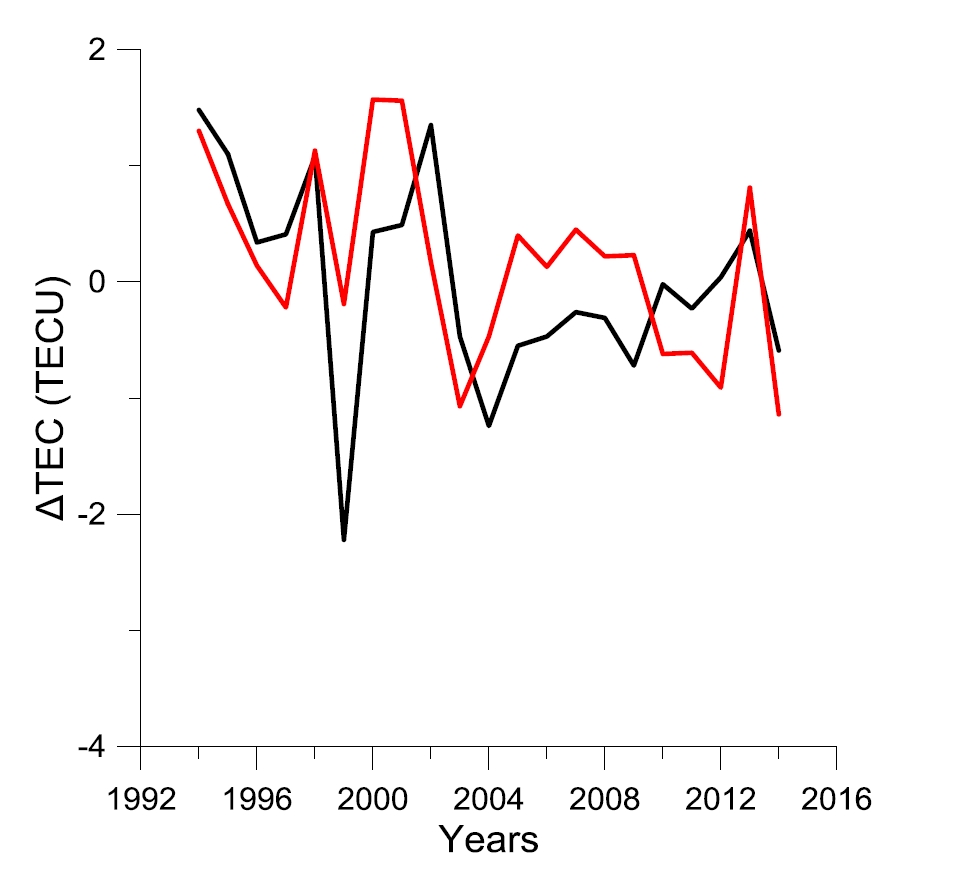In the upper atmosphere, greenhouse gases produce a cooling effect, instead of a warming effect. Increasing greenhouse gas concentrations induce changes in the mesosphere, thermosphere, and ionosphere. We constructed the first scenario of the long-term global change in the upper atmosphere, based on trend studies of various parameters, which shows general cooling and thermal contraction of the upper atmosphere and changes in the ionosphere due to chemical changes in minor atmospheric constituents as a consequence of cooling. The scenario is qualitative and contains still some gaps and a few discrepancies, the number of which has been reduced in recent years. The overall pattern of observed long-term changes throughout the upper atmosphere is qualitatively consistent with model predictions of the effect of greenhouse gas increases.
The observed effects are predominantly caused by the increasing concentration of greenhouse gases, but in the mesosphere, lower thermosphere and lower ionosphere an important role is played by the ozone depletion and recovering. In the F2 region ionosphere some role is played by the secular changes of the Earth’s magnetic field. Important role might be played also by changes of atmospheric wave activity and circulation but these changes are to a large extent not well unknown. The impact of long-term changes of geomagnetic activity on trends in the atmosphere-ionosphere system weakens from above (F-region ionosphere) down to the troposphere, and weakens from the beginning to the end of the 20th century, being unimportant at present. Our results show that anthropogenic emissions of greenhouse gases affect the atmosphere at nearly all altitudes between ground and space.
J. Laštovička is co-chairing the IAGA/ICMA WG II.F “Long-Term Trends in the Mesosphere, Thermosphere and Ionosphere” (chairman 1999-2011).
- Laštovička, J., Š. Jelínek (2019). Problems in calculating long-term trends in the upper atmosphere. J. Atmos. Sol.-Terr. Phys., 189, 80-86, https://doi.org/10.1016/j.jastp.2019.04.011.
- Laštovička, J. (2019). Is the relation between ionospheric parameters and solar proxies stable? Geophys. Res. Lett., 46, 14208-14213, doi: 10.1029/2019GL085033.
- Laštovička, J. (2017), A review of recent progress in trends in the upper atmosphere, J. Atmos. Solar-Terr. Phys., 163, 2-13, doi: https://doi.org/10.1016/j.jastp.2017.03.009.
- Laštovička, J., S.C. Solomon, L. Qian (2012), Trends in the neutral and ionized upper atmosphere, Space Sci. Revs., 168, 113-145, doi: 10.1007/s11-214-011-9799-3.

